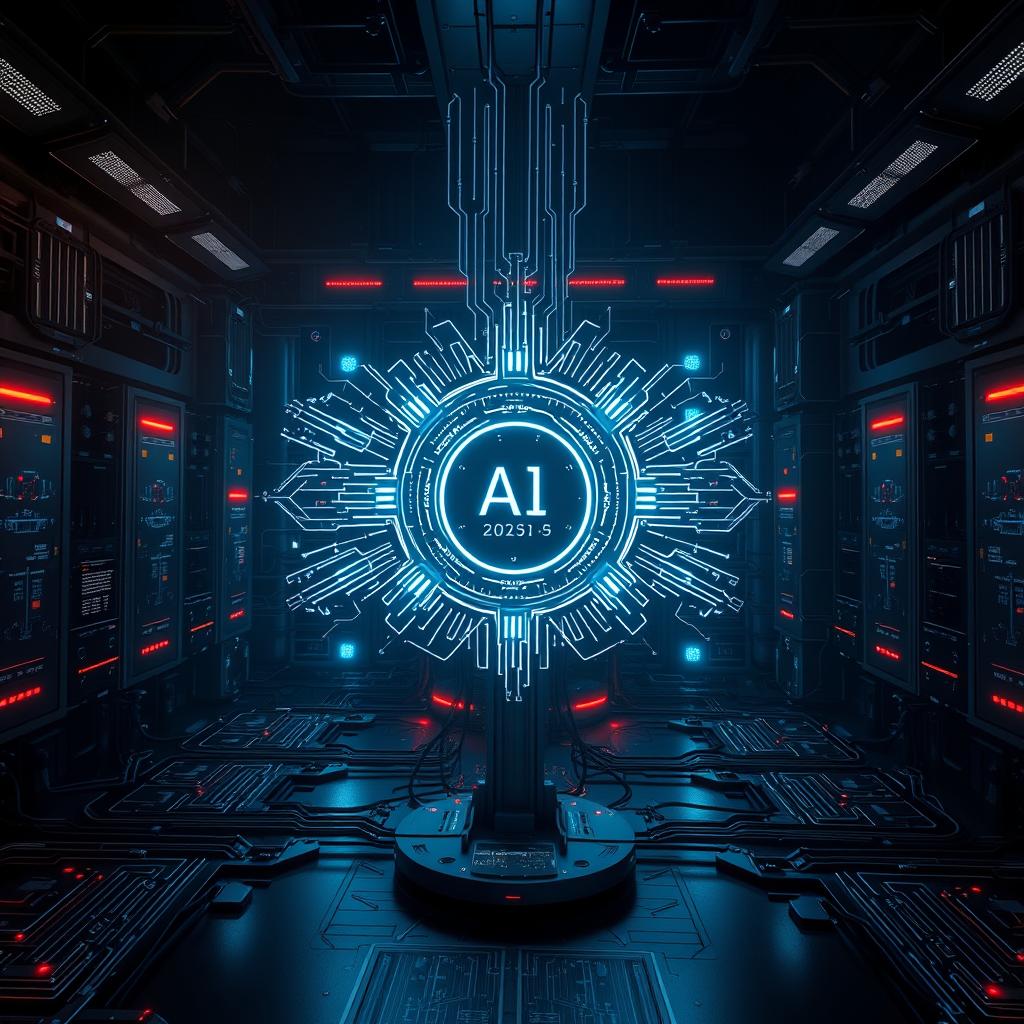Uncensored AI: How It Works and Why It Matters
15 min read
Table of Contents
As we look ahead to the future of artificial intelligence, a big question comes up. What if AI systems don’t have to follow old rules of censorship? You’re about to dive into the new world of uncensored (unfiltered ) AI and its big changes.
In 2025, AI is growing in new ways, and uncensored AI is becoming more important. It’s not just about the tech. It’s also about how it will change how we get and use information and interact with the world.

Exploring uncensored AI, you’ll learn about its inner workings, uses, and how it might affect society. This article will take you through the details of this tech and what’s next for it.
The Evolution of AI Censorship from2024 to2025
As we move into 2025, AI censorship is changing a lot. You’ll see big changes in how AI is controlled and used.
Current Restrictions on Commercial AI Systems
Commercial AI systems have many rules to protect data privacy and stop harmful content. These rules make AI less powerful in some ways. For example, AI can’t always make content that’s not okay or too sensitive.
Key Events Driving the Shift Toward Less Restricted AI
Several important events are leading to less restricted AI. New machine learning tech lets developers make smarter AI models. Also, people want AI that can do more things, pushing what’s possible.
Major Policy Changes Expected in 2025
In 2025, big policy changes will change AI a lot. These changes will aim for a balance between innovation and ethics. These policies will greatly affect how AI is made and used.

Defining Uncensored AI: Technical Realities of2025
Uncensored AI is a term that’s becoming more popular. It refers to AI systems without the usual limits of their predecessors. Let’s explore what makes these advanced AI systems unique in 2025.
What Makes an AI System “Uncensored”
An AI system is “uncensored” if it can process and create information freely. Unlike commercial AI models, it doesn’t have content filters or bias controls. This freedom makes it great for research and innovation.
Creating uncensored AI uses advanced deep learning techniques. These systems learn from huge datasets without rules. They find patterns and connections that others miss.

Technological Breakthroughs Enabling Unrestricted Models
Several breakthroughs have led to uncensored AI in 2025. Advances in neural network architectures and better computational power are key. Also, large, diverse datasets help train these sophisticated models.
Comparing 2025’s AI with Previous Generations
AI systems in 2025 are different from before. They’re more autonomous and can handle complex tasks without humans. They’re also more creative, coming up with new ideas and solutions.
Shifting from controlled systems to open, unrestricted technology marks a major transformation. It has big implications for research, industry, and society.
The Mechanics Behind Uncensored AI Systems
To understand uncensored AI, we must look at its technical side. These systems use complex designs to process info freely. They work without the usual limits.
Advanced Neural Network Architectures
Uncensored AI uses advanced neural network architectures. These are made to boost power and cut censorship. The designs include:
- Deep learning models with many layers
- Neural networks tailored for certain tasks
- Adaptive learning that adjusts to new data
These designs help uncensored AI tackle tough tasks and give better results.
Training Methodologies Without Traditional Guardrails
The training of uncensored AI takes novel approaches. It moves away from old rules. Key points are:
- Big datasets covering many topics
- Reinforcement learning to improve performance
- Real-time updates to keep the system sharp
These methods let uncensored AI learn fast and get better.
Computational Requirements for Unrestricted Processing
Uncensored AI needs lots of computing power to work well. The main needs are:
- Top-notch computing hardware
- Big memory for huge datasets
- Cooling systems to handle heat
Meeting these needs is key for uncensored AI to work right.
Leading Organizations Developing Uncensored AI in2025
In 2025, major tech companies, emerging startups, and research groups are driving the development of unrestricted technology. They are exploring new limits with AI. This includes advanced neural networks and unrestricted processing.
Tech Giants’ Strategic Positions
Big tech companies are pouring a lot of money into unfiltered AI. They see its huge promise to change many industries. For example, Google’s DeepMind is creating AI that can handle huge data without limits. Meta is also pushing the boundaries with its AI research, aiming for more open and flexible models.
- Google’s DeepMind is pioneering unrestricted AI processing.
- Meta is developing more open AI models.
- Microsoft is integrating uncensored AI into its cloud services.
Innovative Startups Changing the Landscape
Startups are also making a big impact in unfiltered AI. Companies like Stability AI and Character.AI are bringing fresh ideas to AI. They are more flexible than big companies, allowing for quicker innovation.
- Stability AI has built a reputation for creating openly available machine learning models.
- Character.AI is developing AI that can have human-like conversations.
Research Institutions Breaking New Ground
Research organizations play a crucial role in advancing unrestricted technology. Universities and research centers are studying AI ethics, data privacy, and technical challenges. For instance, MIT’s CSAIL is leading research in AI, focusing on both technical and ethical sides.
- MIT’s CSAIL is conducting research on AI ethics and technical challenges.
- Stanford University is exploring the societal impacts of unfiltered AI.
Ethical Considerations in an Uncensored AI Landscape
As unfiltered AI grows, it’s key to understand its ethics. The move to less restricted AI in 2025 raises many ethical issues. These must be tackled to make sure these technologies help society.
Potential Benefits for Research and Innovation
Uncensored AI could speed up research and innovation in many areas. By letting deep learning models work freely, scientists can try new ideas. They can also create new uses that were blocked before.
In medicine, for example, unfiltered AI can look at huge amounts of data. This could lead to big advances in understanding and treating diseases.
Ethical Dilemmas Facing Developers and Users
But, uncensored AI also raises big ethical questions. Developers must find a balance between innovation and safety. Users need to know the risks of using unfiltered AI.
Concerns include AI being used for bad things, biased results, and privacy issues in an AI world.
Proposed Ethical Frameworks for 2025 and Beyond
To tackle these issues, new ethical guidelines are being suggested. These aim to keep innovation going while protecting against harm.
- Transparency in AI development and use
- Systems for holding AI accountable
- Rules for using uncensored AI responsibly
By using these guidelines, the AI field can reduce risks. It can also create a space for innovation and progress.
The Regulatory Environment for Uncensored AI
Artificial intelligence is growing fast, making the rules for unfiltered AI more complex. It’s important to know about the different rules and plans to control AI systems.
U.S. Federal and State Legislation
In the U.S., both the federal and state governments have their own ways to regulate AI. The federal government is working on guidelines for AI. Some states, like California, have their own rules for AI systems.
Global Regulatory Approaches
Worldwide, how AI is regulated varies a lot. The European Union has the AI Act to set rules for AI. But countries like China and Singapore are more open, focusing on safety and development.
Industry Self-Regulation Initiatives
Companies are also making their own rules for AI. Many tech firms have their own guidelines, like the Partnership on AI. This group helps set standards for AI.
The rules for uncensored AI are changing fast. With many groups involved, it’s key to keep up with new rules and changes.
Practical Applications of Unfiltered AI in2025
By 2025, unfiltered AI will change many areas of our lives. It will bring new chances for growth and innovation. This technology has many uses, making our future exciting.
Scientific Research and Medical Breakthroughs
Uncensored AI will change science by giving unrestricted access to vast datasets. It will let us do complex analyses without limits. This could lead to big advances in medicine.
In medical research, AI can look at huge amounts of genetic data. It can find patterns linked to diseases. This could help create treatments that fit each person’s needs.
Creative Industries and Content Creation
In the creative world, unfiltered AI will change how we make content. It will offer unparalleled generative capabilities. AI tools can make music, art, and writing that’s top-notch, without old limits.
This could open up new ways to express ourselves and tell stories. It’s a chance for artists to explore new ideas.
Business Intelligence and Decision-Making
For businesses, unfiltered AI will give deep insights into complex data. It will help make better decisions and plans. By looking at lots of data without limits, AI can spot trends and patterns we might miss.
This may provide businesses with a competitive advantage in the market. It’s key to think about data privacy as AI grows. We must make sure it’s used right, following rules to protect data.
Security and Privacy in the Age of Unfiltered AI
As we explore uncensored AI in 2025, security and privacy are key. The power of AI and deep learning comes with risks. These risks must be managed carefully.
Data Protection Challenges and Solutions
Data protection is a major worry with unfiltered AI. These systems need lots of data, which can be risky. To fix this, companies use strong encryption and access controls.
Data anonymization techniques are also being looked into. They help keep sensitive info safe.
Cybersecurity Implications
The cybersecurity risks of uncensored AI are big. AI systems can launch complex cyber-attacks. But, AI can also boost security by spotting and fighting threats.
Personal Privacy in an AI-Driven World
Protecting personal privacy remains a major concern with unrestricted technology. AI systems gather and use a lot of personal data. This calls for clear rules and user control.
Regulations and new tech are being made to protect personal data. For example, privacy-preserving AI techniques aim to keep data safe while using AI.
In short, unrestricted technology introduces new challenges for both security and privacy. But, it also opens doors for new solutions. By tackling these issues, we can use AI safely and protect our privacy.
Public Response to Uncensored AI Technologies
Understanding how people react to unfiltered AI is key for developers, policymakers, and users. As this tech grows, its effect on society will depend on public perception and use.
Consumer Attitudes and Adoption Rates
People’s views on uncensored AI vary widely. Some see its benefits in personalized services and advanced data analysis. Others worry about privacy and security. How much people use it will depend on their experience, how well they understand AI, and the value they see in its services.
Media Coverage and Public Discourse
Media coverage shapes public opinion on unfiltered AI. Fair reporting that shows both sides can spark a meaningful discussion. It’s important to clear up myths and explain what unfiltered AI can and can’t do.
Digital Divide Concerns in Access to Advanced AI
The digital divide is a big issue with unfiltered AI becoming more common. Making sure everyone has access to these technologies is essential. We need to improve digital skills and make AI services more available to everyone.
The public’s reaction to uncensored AI will be complex. By understanding people’s views, promoting clear discussions, and tackling the digital divide, we can ensure everyone benefits from unfiltered AI and ML.
Conclusion: Navigating the Future Beyond2025
Exploring AI shows us that uncensored AI will shape the future. AI advancements and less censorship will change many areas. This includes science and creative fields.
Now, we’re entering a time where data privacy and security are key. It’s important to use uncensored AI wisely. This way, we can enjoy its benefits while avoiding risks.
Looking ahead, AI will become a big part of our lives and work. Understanding how AI affects privacy and security is critical. This knowledge will help us navigate this new world.
Our path into an AI world needs a careful balance. We must use AI’s good sides while watching out for the bad. Keeping up with AI’s progress and challenges is essential.
FAQ
What is uncensored AI, and how does it differ from traditional AI systems?
Uncensored AI is AI that works without limits, unlike regular AI. It can use more data and make content without rules. This makes it more flexible and powerful.
How do advanced neural network architectures contribute to the development of unfiltered AI?
New AI designs help unfiltered AI grow. They let AI understand and create more complex things. This is key for AI to handle many tasks without limits.
What are the implications of training AI models without traditional guardrails?
Without limits, AI can do more things. It can learn from more data. But, it might make bad content, so we need to think about ethics.
How do tech giants and startups contribute to the development of unfiltered AI?
Big tech and startups help AI grow. Big tech has lots of resources for AI. Startups bring new ideas. Together, they make AI better.
What are the benefits and risks of using unfiltered AI in scientific research?
AI helps science by giving access to lots of data. But, it can also make wrong results. We need to balance its benefits and risks.
How might the regulatory environment for unfiltered AI evolve in the future?
Laws and rules for AI will change. Governments, companies, and countries will work together. They will make rules for AI to be safe and useful.
What measures can be taken to address security and privacy concerns related to unfiltered AI?
We need strong data protection and safe AI. We should also follow rules for AI. This will keep users safe.
How is the public likely to respond to the emergence of uncensored technologies?
People will have different views on AI. Some will see its good sides, others will worry. We need to teach people about AI to have a smart talk.
What is the significance of data privacy and deep learning in the context of unfiltered AI?
Keeping data safe is key for AI. AI uses deep learning to understand and make things. We must make sure AI respects privacy.
How will machine learning advancements impact the future of unfiltered AI?
New AI will get better and more smart. It will learn from more data and do complex tasks. This brings both chances and challenges that we need to face.
Reader Ratings & Reviews
There are no reviews yet. Be the first one to write one.
